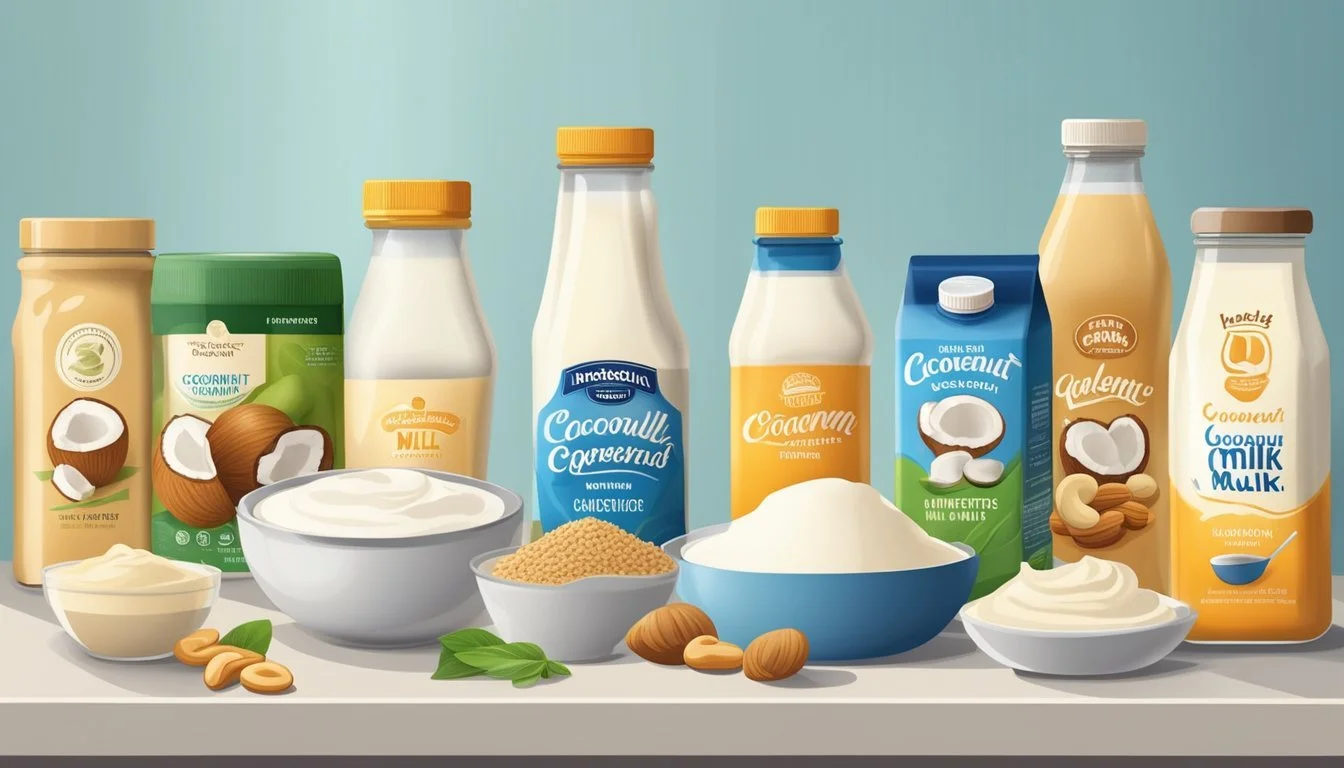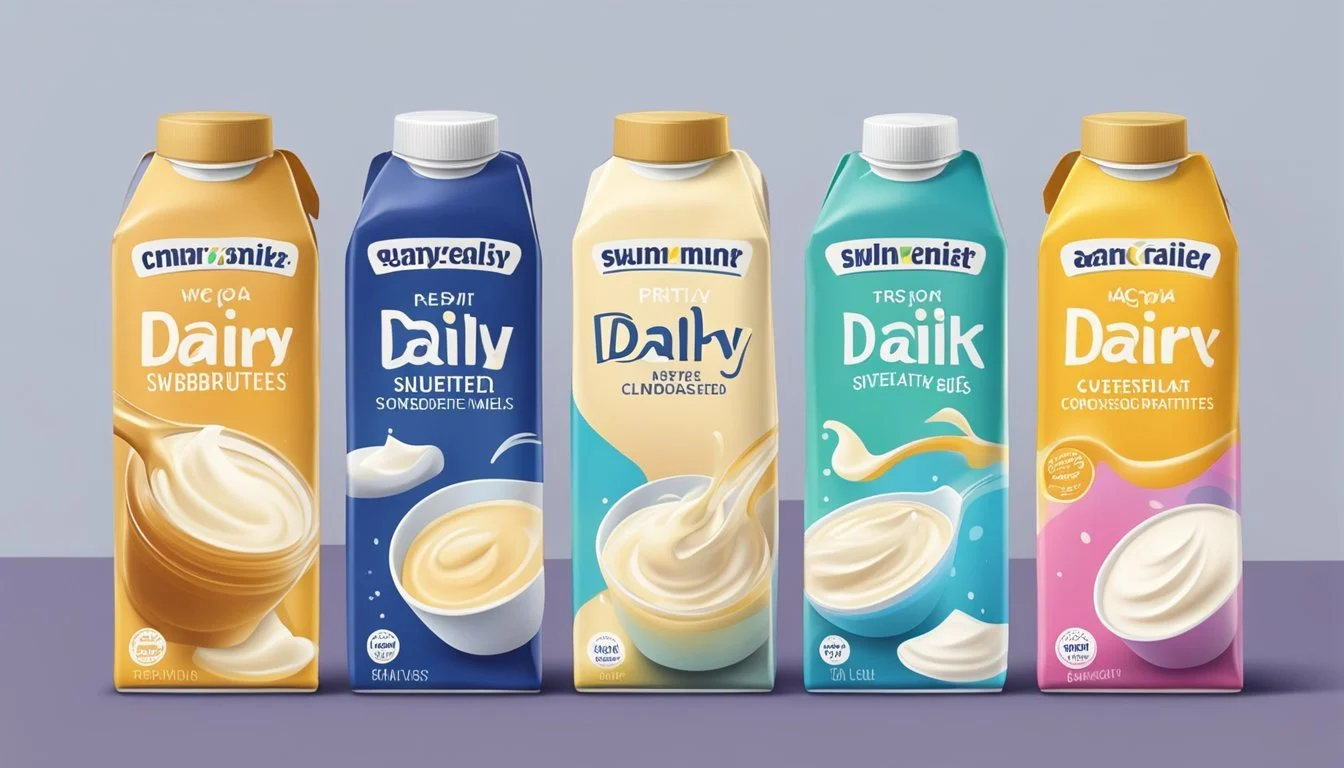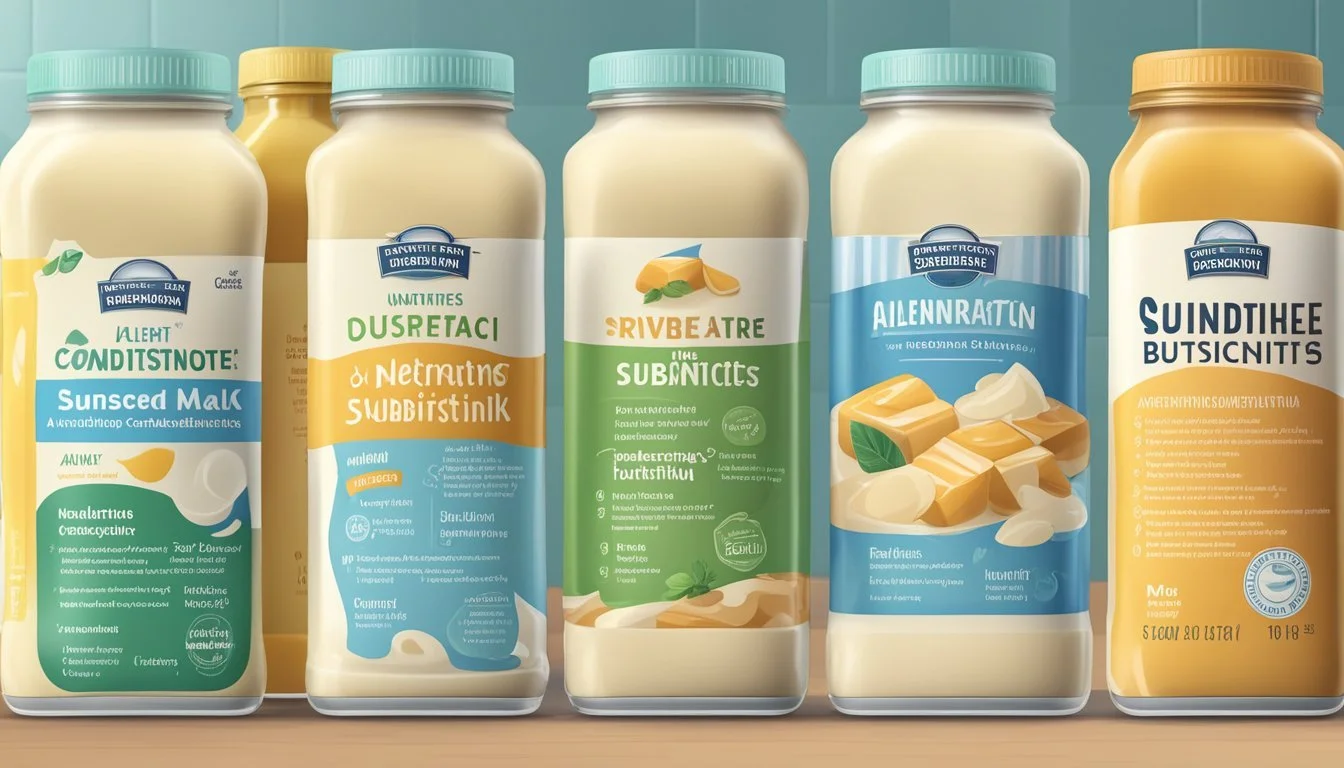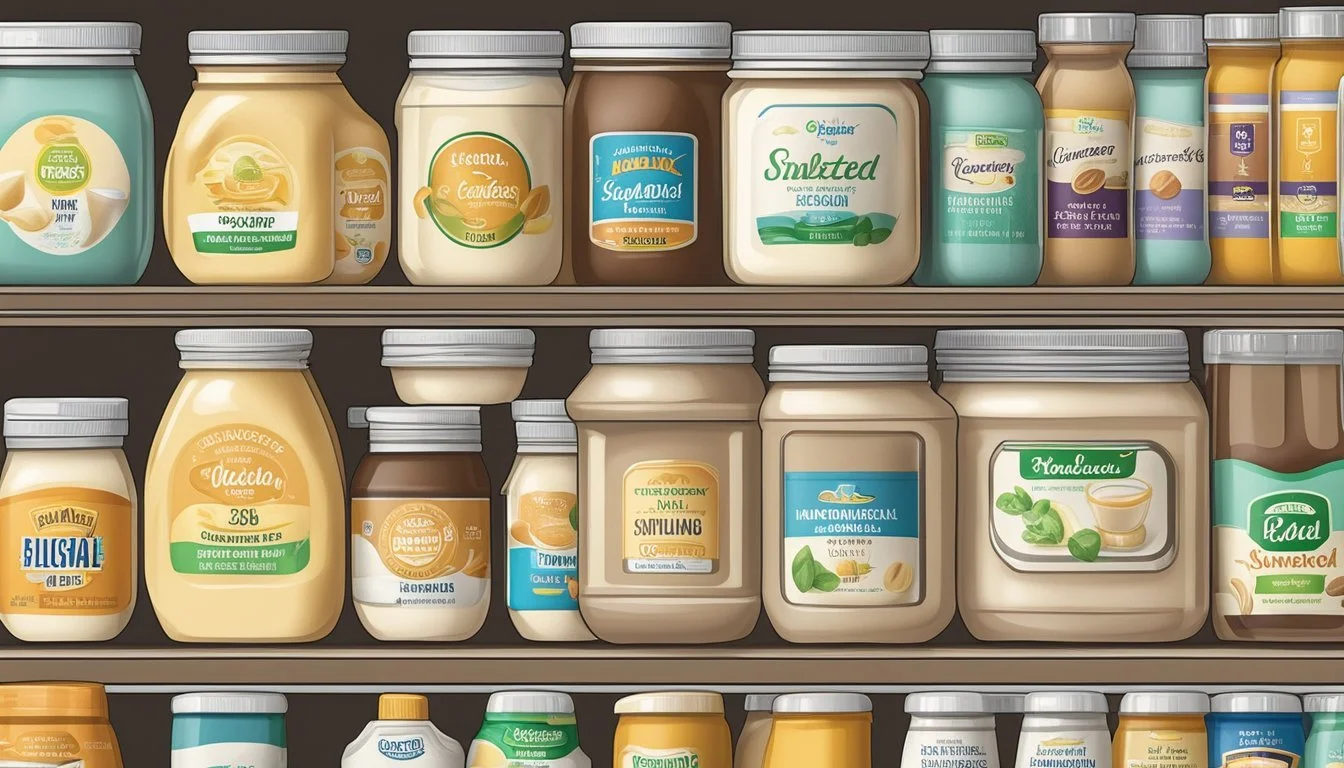Sweetened Condensed Milk Substitutes
Top Alternative Options Explained
Sweetened condensed milk is a popular ingredient in a myriad of recipes, known for its thick texture and rich sweetness that enhances the flavor of desserts like pies, fudge, and ice cream. However, there are several reasons one might need a substitute for sweetened condensed milk, including dietary restrictions, health considerations, or simply the lack of availability. Substitutes offer a solution by mimicking the consistency and sweetness of this dairy staple, ensuring that the desired outcome of the recipe can still be achieved.
Many alternatives to sweetened condensed milk are readily available and can be easily used in cooking and baking. Options range from dairy-based replacements, like heavy cream combined with sugar, to plant-based alternatives such as coconut milk and sugar, which cater to those following vegan diets or those with lactose intolerance. Each substitute can effectively emulate the key characteristics of sweetened condensed milk, making them versatile ingredients in their own right.
While selecting a sweetened condensed milk substitute, the choice depends on the desired texture, sweetness, and flavor profile needed for the recipe. Substitutes such as a mixture of whole milk and sugar offer a straightforward replacement, while almond milk sweetened with sugar provides a lower calorie alternative. These replacements can not only replicate the properties of sweetened condensed milk but also add their unique twist to the overall taste of the dish.
Understanding Sweetened Condensed Milk
Sweetened condensed milk is a highly concentrated milk product that is created by removing a large percentage of water from dairy milk and adding sugar.
Components and Uses
Sweetened condensed milk consists primarily of dairy milk and sugar. The milk is evaporated, leaving a dense liquid, to which sugar is added, increasing its shelf life and creating its unique taste and texture. This sweet product serves an essential role in various recipes, from baking to beverage preparation, providing a creamy texture and rich sweetness.
Uses of sweetened condensed milk include:
Desserts: It's commonly used in pies, ice cream, and fudges.
Beverages: It sweetens and enriches coffee or tea.
Candies: It provides a foundation for confections like caramel and chocolate.
Sauces: It can be used as a base for creamy sauces.
Nutritional Profile
Sweetened condensed milk is high in calories and sugar while also being a significant source of fat and protein. Below is a typical nutritional profile per 100 grams:
Nutrient Amount Calories 321 kcal Fat 8 grams Protein 7.91 grams Carbohydrates 54.4 grams Sugars 54.4 grams Calcium 284 mg Cholesterol 29 mg
It contains calcium, making it beneficial for bone health but also has a high amount of cholesterol, so it should be consumed in moderation.
Dairy-Based Alternatives
When seeking a substitute for sweetened condensed milk within the realm of dairy products, one has straightforward options like evaporated milk, heavy cream, and whole milk, all of which can be combined with sugar to mimic the sweetness and richness of condensed milk.
Evaporated Milk and Sugar
To replace a 14-ounce can of sweetened condensed milk, combine one can (12 ounces) of evaporated milk with 1 1/4 cups of granulated sugar. Heat the mixture gently, stirring until the sugar fully dissolves. This mixture should then be allowed to cool before use in any recipe calling for sweetened condensed milk.
Heavy Cream and Sweeteners
Heavy cream offers the creaminess and high-fat content similar to condensed milk. Mix 1 cup of heavy cream with 1/2 cup of sweetener such as sugar or a sugar alternative to achieve the desired sweetness. Heat this mixture on the stove, stirring frequently until the sweetener is completely dissolved and the texture becomes consistent.
Whole Milk and Sugar
A more readily available dairy product, whole milk, can also be used as a substitute. Mix 1 1/2 cups of whole milk with 1/2 cup of sugar and simmer the mixture until it reduces by about half its volume and thickens. The reduced and sweetened whole milk can then be used in place of sweetened condensed milk in various recipes.
Non-Dairy Substitutes
For those seeking dairy-free alternatives to sweetened condensed milk, a variety of plant-based options are available, catering to different dietary preferences and flavor profiles. These substitutes maintain the desired consistency and sweetness in recipes while providing vegan-friendly solutions.
Coconut Milk-Based Alternatives
Coconut milk serves as an excellent dairy-free alternative due to its rich texture and natural sweetness. To replicate the consistency of traditional sweetened condensed milk, one can simmer coconut milk with sugar until it thickens. This vegan substitute not only provides a similar consistency but also adds a subtle tropical essence.
Ingredients:
1 can (13.5-ounce) full-fat coconut milk
1/4 cup sugar
Combine ingredients in a saucepan.
Simmer and reduce until thickened.
Nut Milk and Seed Milk Variations
Almond milk and other nut milks can be used to create a dairy-free alternative with a slightly nutty flavor. Seed milks, like those made from hemp or sunflower seeds, are also viable for those with nut allergies. To achieve the right consistency, these milks can be mixed with sugar and a thickening agent like cornstarch.
Nut or Seed Milk Condensed Milk (Basic recipe):
2 cups unsweetened nut or seed milk
2/3 cup sugar
1 tbsp cornstarch
Whisk all ingredients in a pan.
Cook until thickened, stirring frequently.
Soy and Oat Milk Options
Soy and oat milks are popular alternatives offering a creamy texture and neutral flavor. These options can be thickened with sugar over heat to mimic condensed milk, rendering them suitable for vegan and dairy-free diets.
Dairy-free Condensed Milk using Soy or Oat Milk:
2 cups soy or oat milk
3/4 cup sugar
Mix milk and sugar in a saucepan.
Bring to a simmer and reduce to desired thickness.
Homemade Condensed Milk Recipes
Creating homemade sweetened condensed milk is straightforward and allows individuals to tailor the ingredients according to dietary preferences or availability. The recipes below offer both dairy and vegan options to ensure everyone can enjoy the delights of homemade condensed milk.
DIY Dairy Condensed Milk
To make a traditional dairy version of sweetened condensed milk, one would need:
Whole milk: 2 cups
Sugar: 1 cup
Butter: 1 tablespoon
Vanilla extract: 1 teaspoon
Instructions:
Combine the milk and sugar in a saucepan over medium heat.
Stir the mixture continuously until the sugar has dissolved.
Once the sugar is dissolved, add the butter and bring the mixture to a simmer.
Reduce the heat and allow the mixture to thicken, approximately 35-45 minutes, stirring occasionally.
Once thickened, remove from heat and stir in the vanilla extract.
Allow it to cool before using it in recipes or storing it in the refrigerator.
DIY Vegan Condensed Milk
For a vegan alternative, one would utilize:
Coconut milk: 13.5-ounce can
Sugar: 1/4 cup
Instructions:
Whisk together full-fat coconut milk and sugar in a saucepan.
Bring the mixture to a simmer over medium heat, stirring until the sugar is completely dissolved.
Reduce the heat to low and simmer for 30 minutes, until the mixture reduces and thickens.
Stir the mixture occasionally, ensuring it doesn't burn or stick to the bottom.
Once the desired consistency is achieved, remove from heat and allow it to cool.
The vegan sweetened condensed milk is now ready to use or can be stored in the refrigerator.
Understanding Substitutes' Impact on Recipes
When replacing sweetened condensed milk in recipes, the choice of substitute profoundly impacts the final product's texture, consistency, and flavor profile. Finding the right balance of creaminess and sweetness is key to a successful substitution.
Texture and Consistency Considerations
Substitutes for sweetened condensed milk can significantly alter the texture and consistency of the dish. For example, full-fat coconut milk mixed with sugar and reduced on the stove can mimic the creamy texture to an extent. However, it may not achieve precisely the same thickness as traditional sweetened condensed milk.
Heavy Cream and Sugar: Blending heavy cream with sugar until the desired thickness and sweetness are achieved can render a similar creamy consistency.
Milk and Sugar Reduction: A combination of milk and sugar, reduced by simmering on a low heat, thickens as the liquid evaporates, approximating the texture but may not be as rich.
Flavor Profiles and Sweetness Levels
Sweetened condensed milk imparts a distinctive sweetness and subtle cooked milk flavor that can be challenging to replicate. Substitutes will bring their unique flavor profiles, which should be considered when aiming for a specific taste expectation in recipes.
Coconut Cream: Offers a tropical flavor that complements desserts but is less sweet, requiring additional sugar to match the typical sweetness levels.
Dairy-Free Options: Tend to have varying sweetness levels and may introduce nontraditional flavors into the recipe.
Each substitute should be assessed not just for its texture and consistency, but also for how the flavor and sugar content will interact with other ingredients in the recipe.
Application in Different Recipes
Substitutes for sweetened condensed milk can be used across a wide range of recipes, modifying the texture and sweetness to suit the dish. Each substitute has specific applications based on the desired outcome in baking, beverages, and even savory meals.
Desserts and Sweet Treats
Substituting sweetened condensed milk in desserts can vary the richness and depth of flavor. In fudge or poke cakes, a combination of heavy cream and sugar can provide the necessary sweetness and dense texture. For ice cream, using heavy cream ensures a creamy consistency. When making a pumpkin pie or cheesecake, the texture is paramount; thus, a thick coconut milk and sugar mixture is favorable for its ability to mimic the original's creamy thickness. In terms of pies like key lime pie, a thicker dairy alternative such as evaporated milk with added sugar could retain the desired consistency. For pudding and cakes, where moisture is key, a mix of milk and a sweetener might suffice.
Beverages and Hot Drinks
In beverages such as iced coffee or hot chocolate, the substitute should complement the primary flavors without overwhelming them. Full-fat coconut milk simmered with sugar can add a tropical twist while maintaining a rich texture. For a coffee, where dairy is often a highlight, a blend of cream and sugar can replicate the richness without changing the fundamental taste profile.
Savory Dishes
While sweetened condensed milk is less common in savory dishes, certain recipes, like curries, can benefit from its flavor profile. In such dishes, a homemade blend of milk and sugar reduced over heat serves to thicken the sauce and add a touch of sweetness, balancing the spices without contributing an overtly dairy taste.
Health Considerations and Dietary Restrictions
When considering substitutes for sweetened condensed milk, it's important to recognize dietary restrictions such as lactose intolerance and veganism. These provisions not only accommodate sensitivities and ethical choices but can also offer different nutritional profiles with varying levels of fiber and essential nutrients.
Lactose Intolerance and Dairy Sensitivity
Individuals with lactose intolerance experience difficulty digesting lactose, the sugar found in milk. For them, milk alternatives that are lactose-free can prevent the symptoms associated with this condition. Some effective substitutes include:
Lactose-Free Milk: Available in many stores, lactose-free milk is treated to break down lactose, and it can be used to make homemade sweetened condensed milk.
Coconut Milk: With its creamy texture, coconut milk is an excellent lactose-free alternative, which, when combined with sugar, mimics the consistency and sweetness of traditional condensed milk.
These alternatives provide a viable solution for those sensitive to dairy while retaining the sensory qualities expected in dishes that typically call for sweetened condensed milk.
Vegan and Plant-Based Diets
For those on a vegan or plant-based diet, avoiding animal products is paramount. Milk alternatives derived from plants can serve as suitable replacements for sweetened condensed milk. They not only respect vegan ethics but often bring additional nutrients and fiber to the recipe. Common vegan substitutes include:
Almond Milk: A lower-calorie option that, when reduced and sweetened, offers a delicate nutty flavor.
Soy Milk: Soy milk is nutritionally rich and provides a consistency similar to cow's milk when thickened.
Oat Milk: High in fiber, oat milk offers a subtle sweetness inherently, which makes it a favorite in baking and dessert preparations.
Each plant-based substitute holds a unique nutritional profile that caters to the need for essential nutrients in a vegan diet. They can be sweetened and reduced to achieve the desired thickness similar to sweetened condensed milk.
Storage and Shelf Life
When substituting sweetened condensed milk, storage conditions and shelf life are critical to maintaining the quality of your substitute products. Each substitute possesses distinct properties that affect how it should be stored to maximize freshness and safety.
Storing Different Types of Substitutes
Canned Coconut Milk: Unopened cans of coconut milk are shelf-stable and should be stored in a cool, dark place. Once opened, coconut milk should be transferred to a sealed container and refrigerated, where it can be kept for up to a week.
Canned Milk (Evaporated Milk): Like coconut milk, unopened cans of evaporated milk are shelf-stable. They should not be refrigerated until opened; afterward, they should be kept in a refrigerator in an airtight container for the same duration as coconut milk.
Powdered Milk: Store powdered milk in a dry, cool place. After mixing with water and sugar to substitute for sweetened condensed milk, one should treat it as a fresh dairy product with a refrigerated shelf life comparable to that of regular milk.
Homemade Mixtures: Any homemade mixture using ingredients like powdered milk or sugar and water should be used immediately or stored in the refrigerator for only a few days, as these do not contain preservatives to extend shelf life.
For all substitutes, it’s paramount to ensure they are kept in conditions that prevent spoilage. Temperatures above room temperature can lead to a decreased shelf life and potential spoilage, while items that require refrigeration after opening should be used within the recommended time frame for optimal taste and safety.
Creative Uses and Experimental Recipes
Sweetened condensed milk imparts a richness and creaminess to a variety of culinary creations. This section explores innovative ways to use alternative sweetened condensed milk options in desserts and beverages.
Innovative Desserts
Coconut Cream Magic: Coconut cream, when used in desserts, can significantly enhance moisture and tenderness. It is an excellent dairy-free substitute for sweetened condensed milk. A simple way to employ coconut cream is by making a Coconut Lemon Icebox Pie. Substitute an equal amount of coconut cream for sweetened condensed milk and blend with lemon juice for a refreshing, tangy filling. The coconut's natural sweetness pairs well with the citrus notes, providing a delightful contrast.
Decadent Chocolate Fudge: Evoking traditional recipes using sweetened condensed milk, one can create a rich Chocolate Fudge using coconut cream or a mixture of cream and granulated sugar. Mix coconut cream with cocoa powder, and a touch of vanilla extract, then gently heat until the ingredients meld into a smooth concoction. Pour into a mold and let it set to create a dessert that balances sweetness and the deep flavor of cocoa.
Crafting Unique Beverages
Cream of Coconut Concoctions: Cream of coconut isn't just a staple ingredient for tropical drinks; it also can add a luscious texture to hot beverages. In a hot chocolate, for instance, mix cream of coconut with your preferred milk, heat gently, and whisk in cocoa powder for a drink that's both warming and indulgent.
Maple and Honey Elixirs: Creating non-dairy versions of sweet, creamy beverages is simple with substitutes like maple syrup and honey, which can replicate sweetened condensed milk's viscosity and capacity as a topping. Use them as bases for tea, coffee, or cocktails. In a blender, combine strong brewed coffee, a spoonful of honey, and a splash of coconut cream for a sophisticated twist on your average iced coffee.
By experimenting with these substitutes and flavour combinations, one can unlock a new dimension of culinary delights without relying on traditional sweetened condensed milk.






